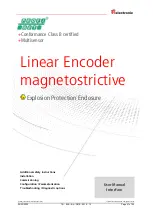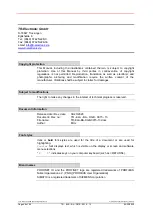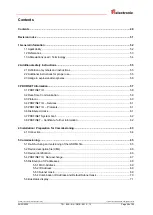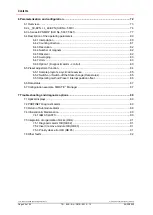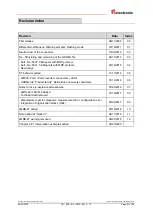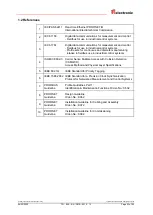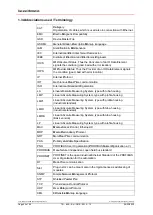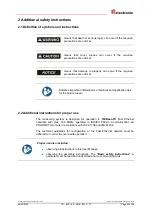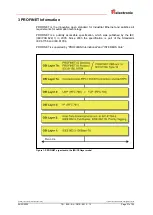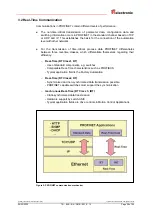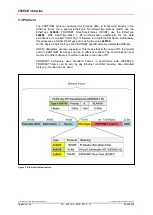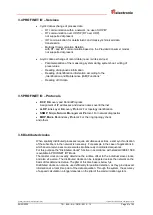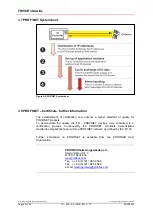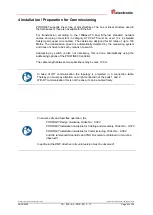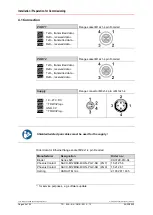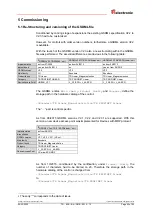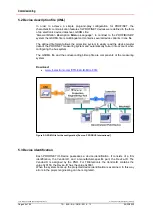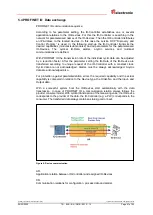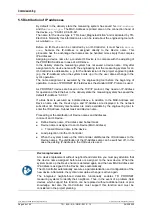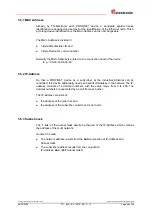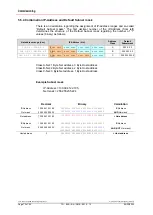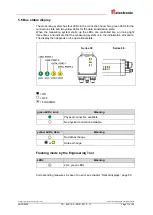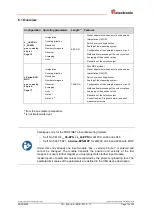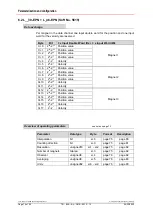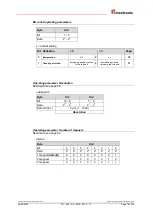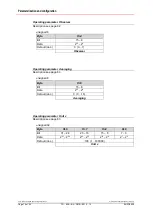
Printed in the Federal Republic of Germany
TR-Electronic GmbH 2009, All Rights Reserved
04/23/2020
TR - ELA - BA - DGB - 0015 - 13
Page 61 of 92
3.4 PROFINET IO
– Services
Cyclic data exchange of process data
– RT communication within a network, no use of UDP/IP
– RT communication over UDP/IP (RT over UDP),
not supported at present
– IRT communication for deterministic and clock-synchronized data
transmission
– Multicast Communication Relation,
with RT- and IRT-communication based on the Provider/Consumer model,
not supported at present
Acyclic data exchange of record data (read- / write services)
– Parameterization of the measuring system during system boot, writing of
preset value
– Reading of diagnostic information
– Reading of identification information according to the
„Identification and Maintenance (I&M) Functions“
– Reading of I/O data
3.5 PROFINET IO
– Protocols
DCP
,
D
iscovery and
C
ontrol
P
rogram:
Assignment of IP addresses and device names over Ethernet
LLDP
,
L
ink
L
ayer
D
iscovery
P
rotocol: For topology identification
SNMP
,
S
imple
N
etwork
M
anagement
P
rotocol: For network diagnostics
MRP
,
M
edia
R
edundancy
P
rotocol: For the ring topology check
and others
3.6 Distributed clocks
When spatially distributed processes require simultaneous actions, exact synchronization
of the subscribers in the network is necessary. For example in the case of applications in
which several servo axes must execute simultaneously coordinated sequences.
For this purpose the "Distributed clocks" function in accordance with standard IEEE 1588
is available in PROFINET IRT-Mode.
The master clock can exactly determine the runtime offset to the individual slave clocks,
and also vice-versa. The distributed clocks can be readjusted across the network on the
basis of this determined value. The jitter of this time base is below 1µs.
Distributed clocks can also be used efficiently for position detection, as they provide exact
information at a local time point of the data acquisition. Through the system, the accuracy
of a speed calculation no longer depends on the jitter of the communication system.

